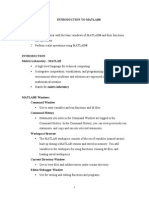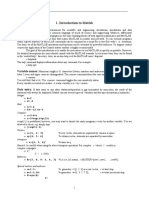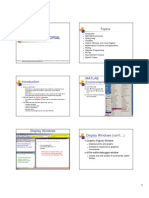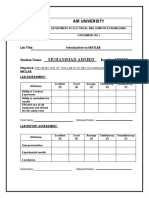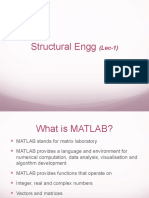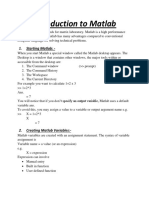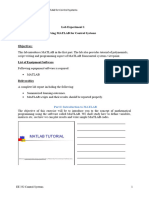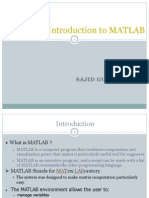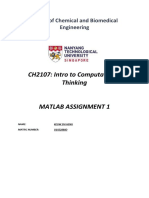0% found this document useful (0 votes)
21 views6 pagesSs Lab Programs
The document outlines an experiment focused on introducing MATLAB, specifically its basic operations on matrices, variable definitions, and arithmetic functions. It details the required software, built-in functions for scalars, vectors, and matrices, as well as commands for manipulating variables and matrices. Additionally, it provides a procedure for creating and using M-files, along with a sample program and its output.
Uploaded by
kirankumarreddy281Copyright
© © All Rights Reserved
We take content rights seriously. If you suspect this is your content, claim it here.
Available Formats
Download as DOCX, PDF, TXT or read online on Scribd
0% found this document useful (0 votes)
21 views6 pagesSs Lab Programs
The document outlines an experiment focused on introducing MATLAB, specifically its basic operations on matrices, variable definitions, and arithmetic functions. It details the required software, built-in functions for scalars, vectors, and matrices, as well as commands for manipulating variables and matrices. Additionally, it provides a procedure for creating and using M-files, along with a sample program and its output.
Uploaded by
kirankumarreddy281Copyright
© © All Rights Reserved
We take content rights seriously. If you suspect this is your content, claim it here.
Available Formats
Download as DOCX, PDF, TXT or read online on Scribd
/ 6
